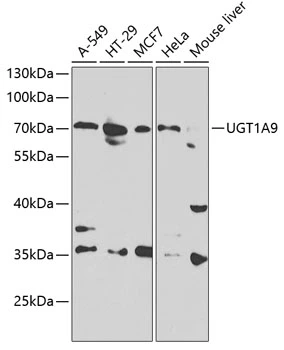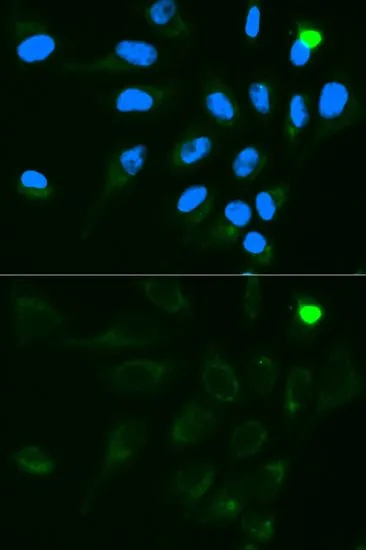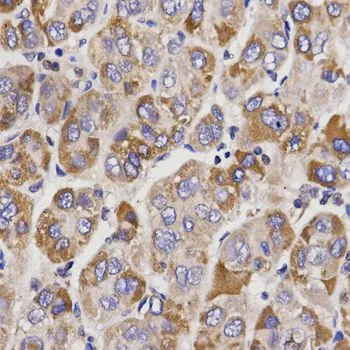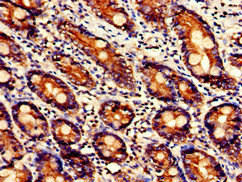
WB analysis of various sample lysates using GTX33571 UGT1A9 antibody. Dilution : 1:1000 Loading : 25microg per lane
UGT1A9 antibody
GTX33571
ApplicationsImmunoFluorescence, Western Blot, ImmunoCytoChemistry, ImmunoHistoChemistry, ImmunoHistoChemistry Paraffin
Product group Antibodies
TargetUGT1A9
Overview
- SupplierGeneTex
- Product NameUGT1A9 antibody
- Delivery Days Customer9
- Application Supplier NoteWB: 1:500 - 1:2000. ICC/IF: 1:50 - 1:200. IHC-P: 1:50 - 1:200. *Optimal dilutions/concentrations should be determined by the researcher.Not tested in other applications.
- ApplicationsImmunoFluorescence, Western Blot, ImmunoCytoChemistry, ImmunoHistoChemistry, ImmunoHistoChemistry Paraffin
- CertificationResearch Use Only
- ClonalityPolyclonal
- ConjugateUnconjugated
- Gene ID54600
- Target nameUGT1A9
- Target descriptionUDP glucuronosyltransferase family 1 member A9
- Target synonymsHLUGP4, LUGP4, UDPGT, UDPGT 1-9, UGT-1I, UGT1-09, UGT1-9, UGT1.9, UGT1A9S, UGT1AI, UGT1I, UDP-glucuronosyltransferase 1A9, UDP glucuronosyltransferase 1 family, polypeptide A9, UDP glycosyltransferase 1 family, polypeptide A9, UDP-glucuronosyltransferase 1 family polypeptide A9s, UDP-glucuronosyltransferase 1-9, UDP-glucuronosyltransferase 1-I
- HostRabbit
- IsotypeIgG
- Protein IDO60656
- Protein NameUDP-glucuronosyltransferase 1-9
- Scientific DescriptionThis gene encodes a UDP-glucuronosyltransferase, an enzyme of the glucuronidation pathway that transforms small lipophilic molecules, such as steroids, bilirubin, hormones, and drugs, into water-soluble, excretable metabolites. This gene is part of a complex locus that encodes several UDP-glucuronosyltransferases. The locus includes thirteen unique alternate first exons followed by four common exons. Four of the alternate first exons are considered pseudogenes. Each of the remaining nine 5 exons may be spliced to the four common exons, resulting in nine proteins with different N-termini and identical C-termini. Each first exon encodes the substrate binding site, and is regulated by its own promoter. The enzyme encoded by this gene is active on phenols. [provided by RefSeq, Jul 2008]
- Storage Instruction-20°C or -80°C,2°C to 8°C
- UNSPSC12352203








